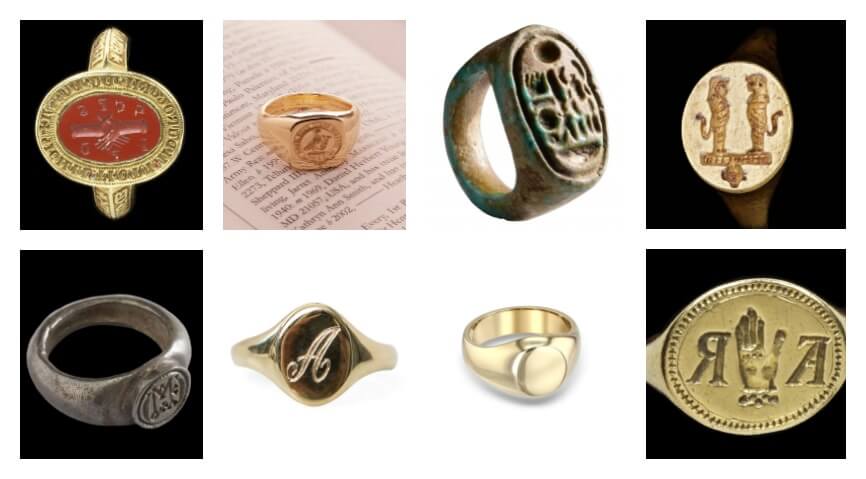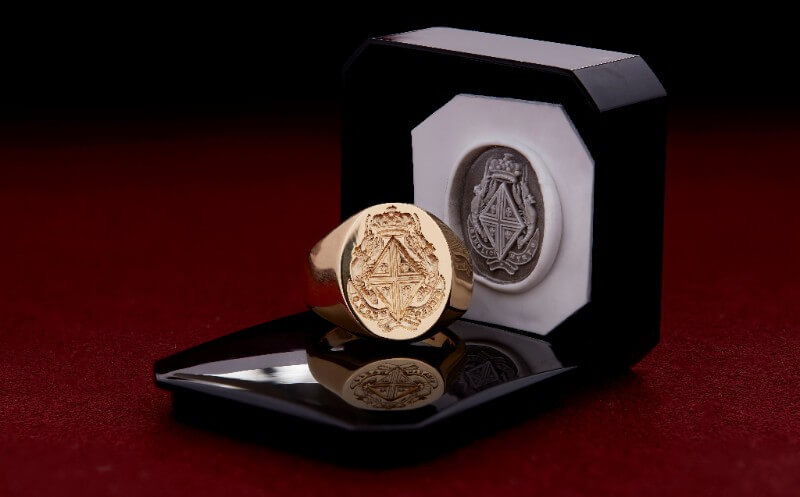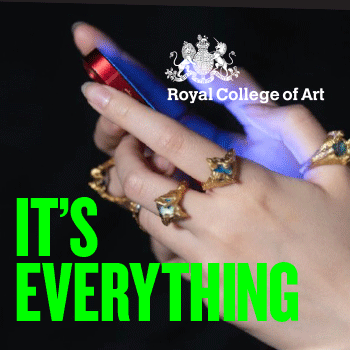Signet rings all the rage... again
Signet rings all the rage again
Reading Time:
1 min {{readingTime}} mins
The recent hike in signet ring sales, among both men and women, represents a tiny sliver of heraldry history, with trends and customs in 'pinky' rings and regalia dating back almost 3,500 years.
Today, it is no longer necessary have a family coat of arms and a small fortune to wear a signet ring. Most high street jewellers can engrave initials on a ring for as little as £100 but the desire to embellish one's appearance with an item that indicates heritage and pedigree or power remains as strong as it was in around 1300 BC when the Greeks and Etruscans first felt the need to advertise status and wealth or carry an emblem that they could use with a wax seal. From day one, signet rings were personalised and powerful.

Signet rings were used to denote family status and power from as early as 1300BC and remain ever popular
According to the House of Garrard, the world's longest serving jewellers, the comissioning of a signet ring still plays an important part in family traditions and has been a constant feature of their business since they started up in 1735.
“When we look at our ledgers we see the House has quietly been crafting signet rings for centuries, right up to the present day,” says Sara Prentice, House of Garrard's Creative Director.
"Family names reappear as each new generation commissioned the rings that would tie their wearers back to their heritage."

House of Garrard has been making signet rings since 1735 and holds many in stock
Looking back through the ages, signet rings offers an insight into the sort of tools and materials associated with different historical periods. Soft and hard stones were fashioned by the Ancient Greeks and the arrival of metal in the Bronze Age opened up unlimited option with lapis lazuli, ruby, amethyst and garnet among the most popular choice of gemstones.
Not much has changed then though today, commissions come mainly from parents wanting to mark their son or daughter’s coming of age, with an eighteenth or twenty-first birthday present
“It’s a wonderful way to celebrate their transition into adulthood and continue a great family tradition,” added Head of Design Claire Scott.
The House holds oval and cushion rings in stock, enabling the wearer to decide which suits their style best. White or yellow gold and platinum are possibilities, as are the stones most suitable for carving, such as tigers eye, lapis lazuli or bloodstone.
Once designs are confirmed, the ring can be ready within six weeks. An 18ct yellow gold signet ring starts at £800 and can cost up to £1,500.
Author:
Published:











